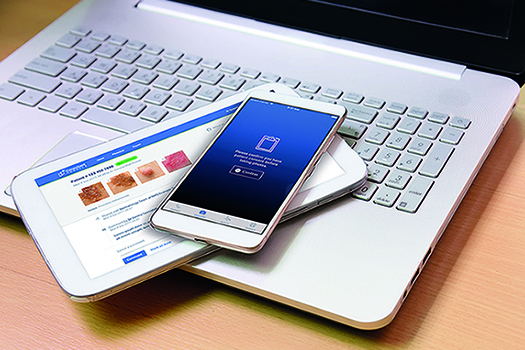How to carry out a video consultation safely in general practice
This guidance is aimed at NHS general practice staff who are consulting via video with patients at home (although we expect the key principles to apply to practitioners across wider primary care).
Practitioners are expected to have full access to the patient’s primary care medical record and to be consulting with patients in England.
We will update this guide but are also keen to hear your feedback via [email protected].
Key principles for safely assessing patients using a video consultation
• Apply your current skills and clinical acumen when consulting remotely. Use the boundaries and thresholds you already use and apply these.
• A good history and functional assessment are vital. Consider non-COVID-19 differentials, and the context. Are these new symptoms and signs, or a follow on relating to an established long-term health condition, or wellbeing problem?
• Tools can assist in decision-making but must not overshadow a holistic assessment of the patient.
• Look at trends and for signs of deterioration.
• Remain professionally curious and vigilant. Consider safeguarding issues and whether you can explore these fully via a remote consultation. Have a very low threshold for converting a remote consultation to a face-to-face assessment if you have concerns. Update your safeguarding policy to cover remote consultations.
• Consider how your actions will change your clinical management, eg will the patient need escalation regardless of whether they have a face-to-face examination?
• Explicit safety-netting is essential. Consider if the patient requires remote monitoring.
• Use colleagues for support, for example, to discuss clinical issues and peer-review decision making
• Signpost patients to patient information to support self-management and safety netting on the NHS website (including access using a virtual assistant or similar devices).
• Non-digital users can be supported to use video technology by a carer, where available, with implied patient consent.
• If a patient requires a face-to-face review, eg they need a physical examination or are 3 Principles of safe video consulting in general practice unable to use the technology, this should be arranged at an appropriate healthcare setting and time.
• Facilitate effective communication using translation services, where possible, but their availability should not preclude a video consultation if deemed appropriate based on clinical judgement.
• Complete a clinical safety risk assessment. Where a video consultation solution has been procured by the CCG this should be carried out by the CCG on behalf of their practices, with individual practices working collaboratively with the local clinical safety officer.
• As a consequence of the response to COVID-19, patients may not be accessing health services when they need to, so presentations may be more serious at first contact. Be aware of more vulnerable characteristics where engagement may be delayed
Source: NHS and RCGP, Principles of safe video consulting in general practice [published 29 May]
Pulse October survey
Take our July 2025 survey to potentially win £1.000 worth of tokens













